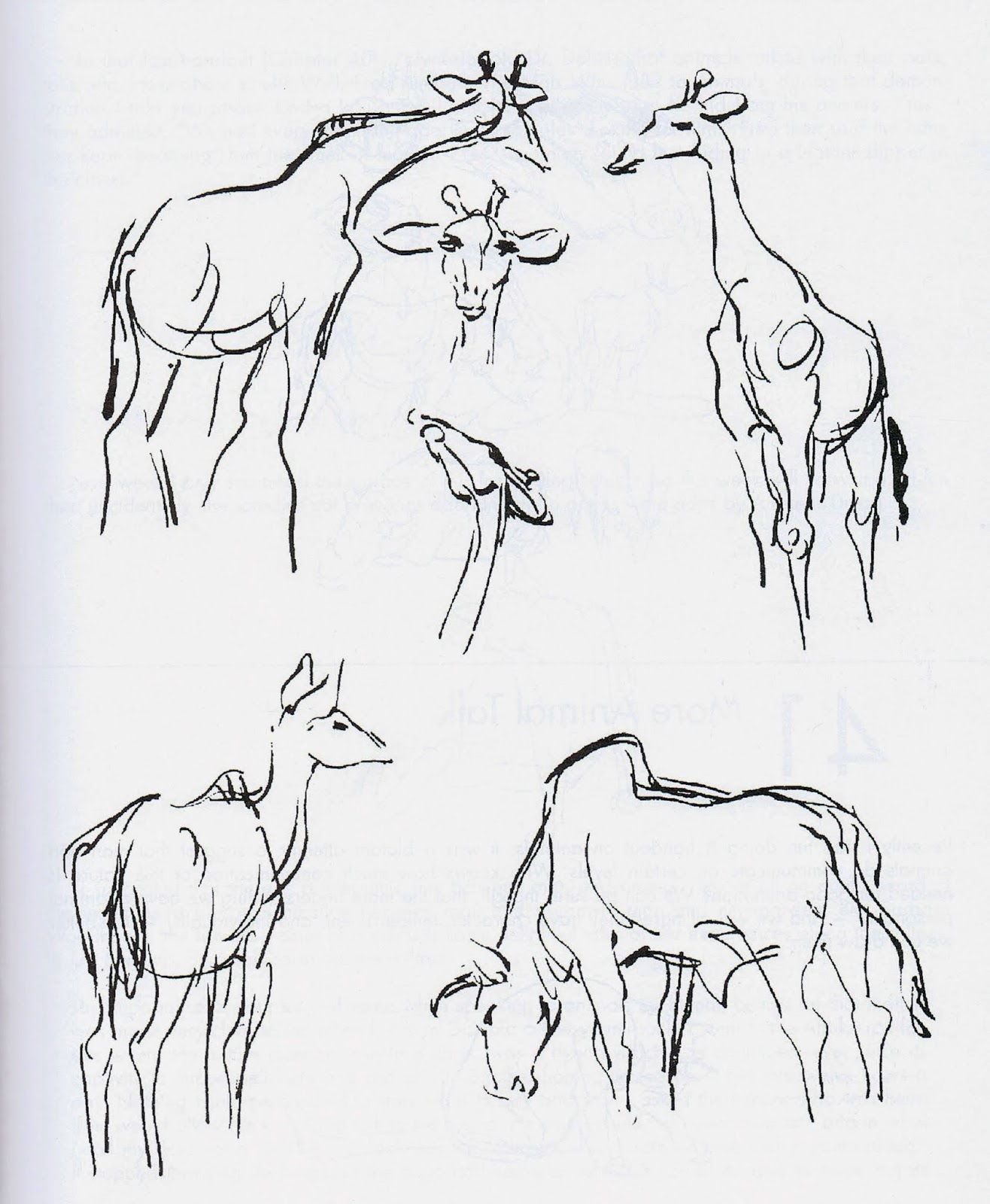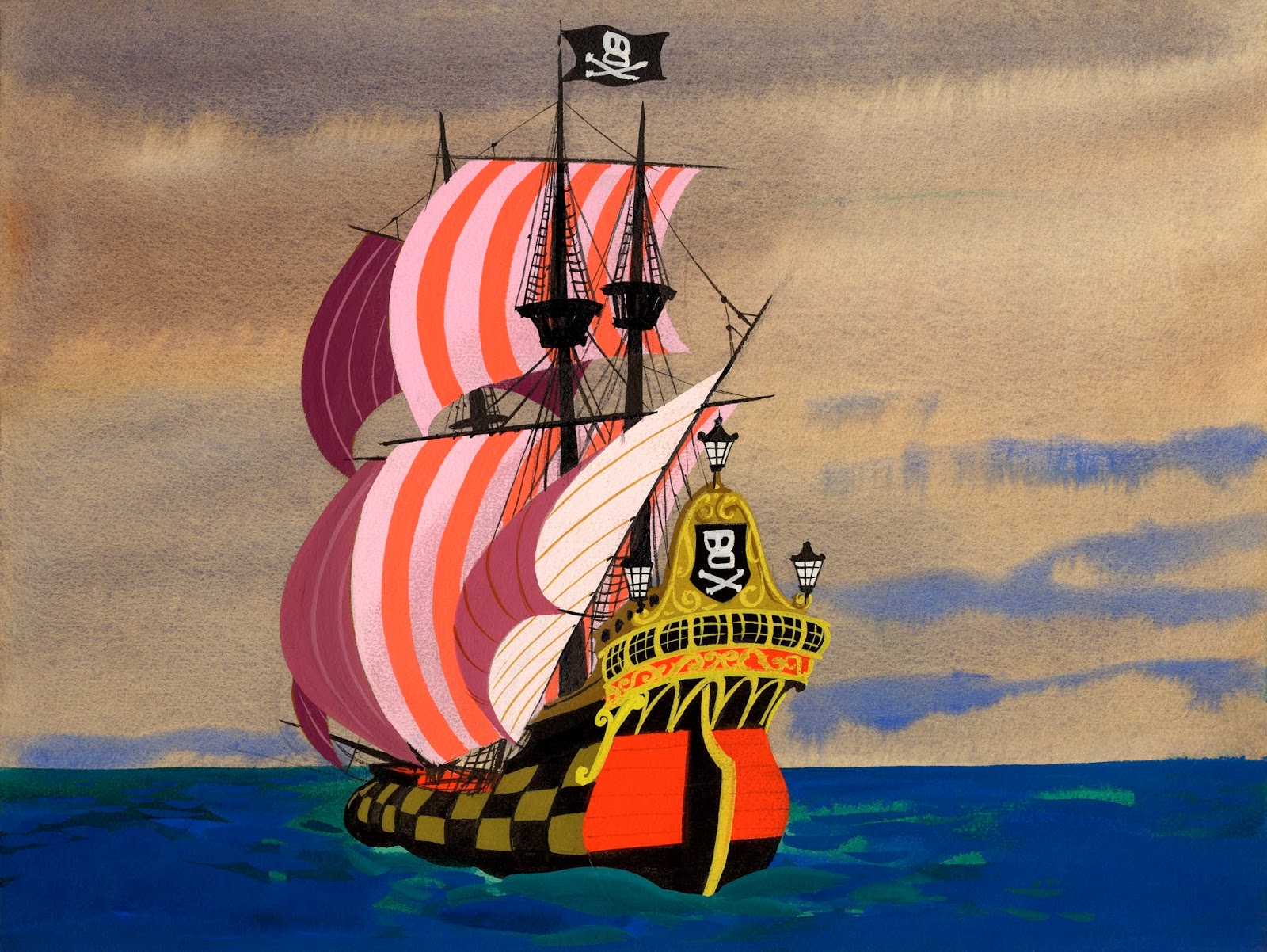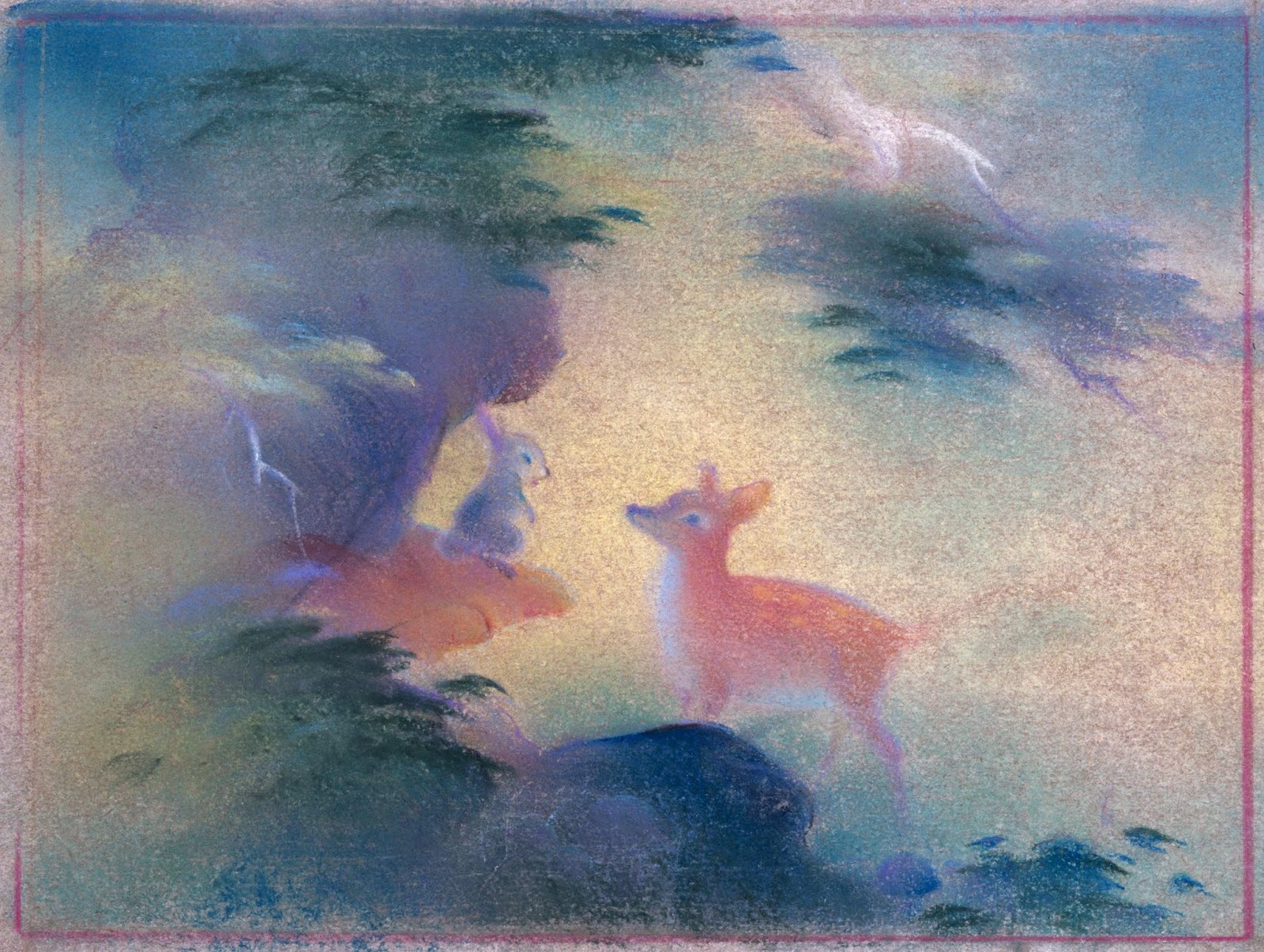Traditional animators generally don’t deal a lot with color. We express ourselves with black pencil lines on white paper. That doesn’t mean though that most of us don’t have great appreciation for excellent color, and the way our scenes look like on the screen in finished form.
Some of these images were sold at auctions recently, and they are outstanding examples of Disney’s incredible use of color over the years.
In this Mary Blair sketch of Hook’s pirate ship the muted sky color and the water’s blue and turquoise make the reds pop out dramatically. What a striking painting, you can’t take your eyes off it.
Mary also painted this piece with Alice and the Caterpillar. The palette is much more muted here, mostly shades of blue and pink dominate the scene. I love the reflective light under the mushrooms.
Even softer pastel colors in this lyrical image with Thumper and Bambi, likely painted by Tyrus Wong.
The subtle warm and cool tones offset each other magnificently.
Eyvind Earle painted this concept piece for the short film Pigs is Pigs. The toned down colors in the back compliment the richer tones of the little train station. And those little touches of red add a dynamic element.
Brightly colored characters in front of a dark monochromatic background.
Professor Owl is mostly a combination of blue tones, the pupil bird is kept in hues of yellow.
These color choices look so simple, yet they were carefully chosen by Eyvind Earle.
This is Danny, the little lamb from the film So Dear to my Heart. What a beautiful combination of muted colors with some wine red to liven up this cel image.
Technicolor splashes on these fast moving flowers from the Nutcracker Suite.
The background is black, which makes the characters read very vividly. An amazing pastel drawing!
I love the sketchy highlights on the Thistle’s leaves.
John Lounsbery’s Willie, the Giant from the film Mickey and the Beanstalk.
His purple and green areas are fairly muted by contrast to his bold red hair. That little eccentric color touch helps to bring out his zany personality.
Very interesting color choices on this cel with the Witch from Snow White. She is basically kept in black & white, that red apple seems to be the only “real” color here. And your eye goes right to it.
Note that the other apples in the basket are dull green and yellow.
Another piece from Mickey and the Beanstalk. I have always loved Disney night skies, and this image is no exception. It’s the ultimate blue! The reflecting moon light gives this sketch just the right touch of realism.
You would think that so much green in this cel of The Mad Hatter would look overly saturated. But it’s the type of greens together that makes this work. Only his coat is a bright green, the rest is muted. And that turquoise bow gives the outfit a fresh little contrast.
What a dramatic watercolor sketch from Bambi. The black and dark blue tones add to the terrifying mood. Look how effectively the right upper tree catches the lightning’s white. The fleeing deer has plenty of empty space on top, so it doesn’t get lost in the busy composition.
Too much color in this cel set up from Sleeping Beauty? Not at all. The lit, colorful areas are kept in the back while the foreground elements are monochromatic. The animators complained that there was too much going on in the film’s backgrounds. But in the end your eye goes to whatever is moving on the screen. Pretty darn breathtaking!























































